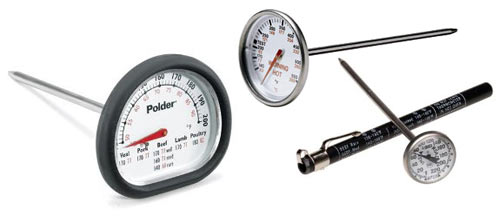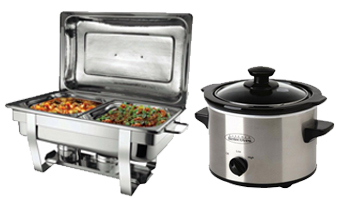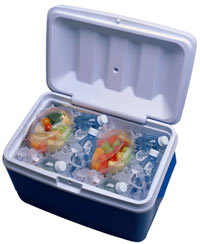Temporary Food Facilities Training - Thermometers
Thermometers Must Be Accurate To Within + or - 2 F
To ensure that potentially hazardous foods are held and cooked to the proper temperature, the thermometer is one instrument food handlers cannot do without. These styles of thermometers may be purchased in many supermarkets for about $8-$12.
Before inserting the thermometer into the food, wash, rinse, and sanitize the stem section (sanitizing methods will be discussed later in the training). Monitor food temperatures throughout the food preparation, holding, and serving process.
To use a thermometer to check meat, insert it through the fat side of the meat, being careful not to touch bone. Bone conducts heat faster, and you’ll get a false reading of the meat’s temperature.
The sensing area of thermometers is ½ inch to 2 inches long, as noted on the picture on the right, and this area must be inserted in the deepest part of the food.
Hot Holding
Cooked food must be held at 135°F or higher. Food may be held in chafing dishes, steam tables, and slow cookers. DO NOT use cooking equipment to keep food warm. Cooking equipment is for cooking only.
Hot holding equipment must be capable of maintaining the internal temperature of potentially hazardous foods at 135°F or above during service, display, or holding periods. Use a probe thermometer to verify proper food temperature. Leftovers may not be used in the booth. Hot-held foods that have not been used by the end of the day must be discarded.
Cold Holding
Cold foods must be held at 45º F or below. Mechanical refrigeration is preferred. However, an ice chest with ice from an approved source may be used (i.e. store bought, bagged ice).Provide sufficient ice so the level of ice is equal to the level of food instead of storing food on top of ice. Potentially hazardous foods held at 45º F must be discarded at the end of the day.





